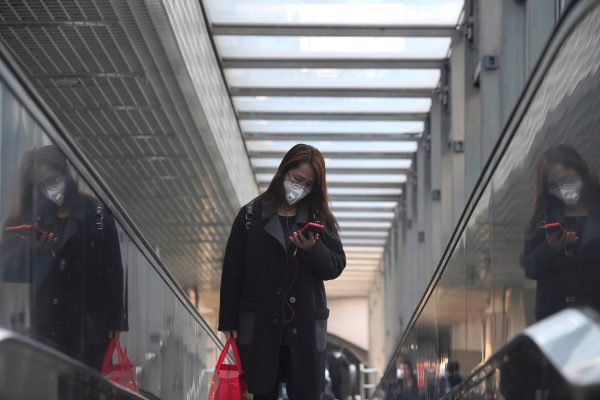In justifying the PHEIC declaration, the Director-General emphasised the ‘sort of damage this virus could do if it were to spread in a country with a weaker health system’. The PHEIC has put the Chinese government under enormous pressure to contain the spread of the virus. As of 21 February, epidemiological data from China’s National Health Commission showed that there are 53,284 confirmed COVID-19 cases, with 11,477 critically-ill patients and 2345 deaths — surpassing those of the 2003 SARS epidemic. There are 618,915 suspected cases of close contact, among which 113,564 are under medical observation. There are likely to be far more cases than these numbers suggest.
The main transmission mechanism of COVID-19 is respiratory droplets and close contact. The complete travel restriction from the outbreak’s epicentre in Wuhan imposed on 23 January have proven to be crucial and necessary — especially as the timing of the outbreak coincided with the world’s largest human migration event, the Chinese New Year public holidays.
Combining epidemiological and human mobility data, including information on flight and train bookings and mobile-phone use, a preliminary evaluation found that the Wuhan travel ban slowed the spread of COVID-19 from Wuhan to other cities in China by 2.9 days. This delay provided critical time to establish and reinforce disease control and management measures.
Together with the extension of the Chinese New Year public holidays, these decisions have been essential to slow the spread of the epidemic. Daily statistics released for 21 February revealed that in the previous 24 hours, Wuhan and the rest of Hubei Province reported 366 new confirmed cases and 106 deaths from COVID-19, compared to 31 newly confirmed cases and 3 deaths in the rest of the country.
In the digital era, the internet and social media have penetrated every aspect of the COVID-19 outbreak. Government agencies have set up official websites for releasing disease surveillance data and providing health information and advice. This has improved government transparency and helped circulate vital information and advice.
For instance, in response to the government and health authorities’ advice, people stopped house visit and family gathering practices common during New Year. Instead, social media platform WeChat became the main platform for exchanging New Year greetings and connecting with family and friends. As a further strategy to curb the spread of COVID-19, the Chinese government extended the public holidays and people were told to stay at home.
As the epidemic escalated, social media has become the primary channel for information sharing and connecting with others. ‘Nucleic acid testing’ for diagnosing the virus and the ‘turning point’ of the epidemic are now part of people’s vocabulary with thanks mostly to online platforms. Social media has also been used as a tool for community-based surveillance and reporting suspected cases. Another example is the social media reactions of anger and grief towards the local authority’s reprimanding of Dr Li Wenliang’s early alert of the viral infection and his death from COVID-19. This eventually triggered the central government to take action against the senior officials responsible in Hubei.
But social media can also be a source of false information, which can cause social panic and distress. For instance, some technology applications have been used to identify the households with suspected or confirmed COVID-19 cases in residential complexes. In some cases, this has exacerbated fear in the community and led to social discrimination against those directly affected by the virus.
The COVID-19 epidemic is still evolving. China’s response to the outbreak has been unprecedented and likely can’t be completely replicated elsewhere. The use of epidemiological and human mobility data to examine the spatial dispersal of the virus, engagement of the whole community and the use of social media for community-based surveillance and reporting have the potential to be used in settings beyond the current epidemic in China.
While the internet and social media have enabled the rapid dissemination of healthcare and public safety advice and information, managing the risk of miscommunication and false information during public health emergencies remains a challenge for all of us.
Mu Li is Professor of International Public Health at the Sydney School of Public Health, The University of Sydney.
This article is part of an EAF special feature series on the novel coronavirus crisis and its impact.

